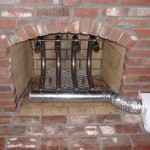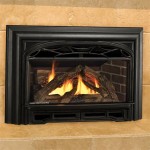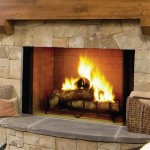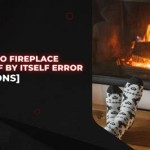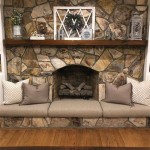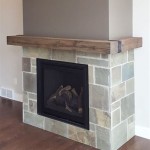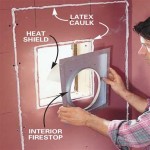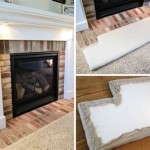How To Replace a Gas Fireplace Insert
Replacing a gas fireplace insert can significantly enhance the aesthetic appeal and functionality of a home's heating system. This process, while achievable for a confident homeowner with proper tools and understanding, demands meticulous attention to safety protocols and adherence to local building codes. Incorrect installation can lead to hazardous gas leaks, carbon monoxide poisoning, or fire. Therefore, a thorough comprehension of each step and cautious execution are paramount.
This article provides a detailed guide on how to replace a gas fireplace insert safely and effectively. It outlines the essential preparation steps, removal of the existing insert, installation of the new unit, and crucial safety checks. It is strongly recommended to consult with a qualified gas technician or HVAC professional if there is any uncertainty or a lack of experience in working with gas appliances.
Preparation and Safety Precautions
Prior to initiating any work, comprehensive preparation is crucial. The first step involves gathering all necessary tools and materials. This includes, but is not limited to, a pipe wrench, adjustable wrench, screwdriver set, level, gas leak detector (soap solution or electronic detector), Teflon tape (specifically designed for gas lines), gloves, safety glasses, and the new gas fireplace insert with its accompanying installation manual. It is imperative to procure the correct size and type of gas line connections for the new insert, ensuring compatibility with the existing gas supply line.
Above all, safety must be the foremost concern. The gas supply to the fireplace must be completely shut off. Locate the gas shut-off valve, typically situated near the fireplace or at the main gas meter. Turn the valve to the "off" position. After shutting off the gas, diligently test the connection for any residual gas pressure. This can be done by carefully loosening a gas line connection and listening for any hissing sound or smelling any gas odor. If any gas is detected, immediately retighten the connection and re-evaluate the shut-off procedure. It is also advisable to disconnect the electrical power to the fireplace to prevent accidental electrical shocks.
Furthermore, protecting the surrounding area is essential. Cover the flooring and adjacent furniture with drop cloths to safeguard against scratches, dust, and debris generated during the removal and installation process. Ensure adequate ventilation in the work area by opening windows and doors to dissipate any residual gas odors. Familiarize oneself with the local building codes and regulations pertaining to gas fireplace installations. Verify that the new insert meets the required safety standards and energy efficiency ratings. If necessary, obtain the required permits before commencing the installation.
Removing the Existing Gas Fireplace Insert
Once the safety precautions and preparations are completed, the removal of the old gas fireplace insert can begin. Begin by detaching any decorative components, such as the surround or mantel, if applicable. These are usually secured with screws or clips and can be carefully removed using a screwdriver or pry bar.
Next, disconnect the gas line. Using two wrenches, one to hold the gas pipe and the other to loosen the fitting connecting the gas line to the insert, carefully disconnect the gas line. Ensure that no gas is leaking during this process. Once the gas line is disconnected, cap the gas pipe to prevent any gas from escaping. Use a gas-approved cap with Teflon tape to ensure a tight seal.
Locate and disconnect the electrical connections to the existing insert. This typically involves disconnecting wires from a junction box or unplugging a power cord. Before disconnecting any wires, take a photo or label the wires to ensure correct reconnection later. Once the gas and electrical connections are safely disconnected, the insert is ready to be removed. Depending on the weight and size of the insert, assistance may be required to lift and maneuver it out of the fireplace opening. Carefully lift or slide the insert out of the fireplace, ensuring not to damage the surrounding brickwork or framing. Dispose of the old insert according to local regulations.
Installing the New Gas Fireplace Insert
Before installing the new gas fireplace insert, thoroughly inspect the fireplace opening to ensure it is clean and free of any debris. Repair any cracks or damage to the brickwork or firebox before proceeding. Ensure the flue is clean and in good working order. If necessary, have the flue professionally inspected and cleaned.
Carefully unpack the new gas fireplace insert and verify that all the necessary components are present. Refer to the manufacturer's installation manual for specific instructions and diagrams. Position the new insert into the fireplace opening. Ensure that it is level and properly aligned. Use shims to adjust the level if necessary.
Connect the gas line to the new insert, using Teflon tape to ensure a gas-tight seal. Tighten the connection securely, but avoid over-tightening, which could damage the fittings. Reconnect the electrical connections, referring to the photos or labels taken during the removal process. Double-check all wiring connections to ensure they are correct and secure.
After connecting the gas and electrical lines, conduct a thorough leak test using a gas leak detector or soap solution. Apply the solution to all gas line connections and look for bubbles, which indicate a leak. If a leak is detected, immediately shut off the gas supply and tighten the connection. Retest until no leaks are present. Install any decorative components, such as the surround or mantel, according to the manufacturer's instructions.
Once the installation is complete and all safety checks have been performed, turn the gas supply back on slowly. Follow the manufacturer's instructions for lighting the pilot light and operating the fireplace. Observe the flame pattern and ensure it is burning correctly. Monitor the fireplace for any unusual noises, smells, or smoke. If any issues are observed, immediately shut off the gas supply and consult a qualified gas technician.

How To Install A Fireplace Insert Diy Save Money

Fireplace Insert Guide Fireplaces Direct Learning Center

Convert To Gas Installing Fireplace Inserts Doctor Flue

Replacing Your Condo Fireplace Vancouver Gas Fireplaces
How To Install Gas Fireplace Insert Heat Glo

How To Install A Gas Fireplace Insert This Old House

How To Select And Install A Gas Fireplace Log Set Fireplaces Direct Learning Center

Custom Installation Of Fireplace Inserts Insert Installations Sierra Hearth And Home
Converting A Wood Burning Fireplace Into Gas Heat Glo

Lodi Wi Installing Fireplace Insert Remodel
Related Posts

